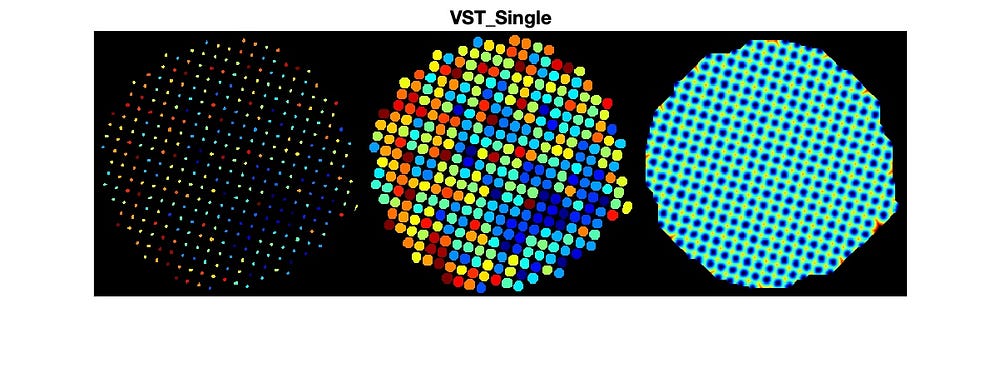Espresso Filter Baskets: Visualized

I previously analyzed multiple espresso baskets to try to gain a better understanding of why some are good and some are bad. One of the interesting intermediate results was the visualization of these metrics with the filters themselves. So, here are the visualizations for a variety of espresso filter baskets.

Here is the first filter for the Kim Express, a double filter. Each image uses the Jet color scheme which goes from blue (lowest) to yellow to red (highest). It is a quick way to visually see differences in filters using colors. If you are color-blind, drop me a note, and I’ll reproduce them in gray scale.
Here is the legend to understanding these images:
Left: Hole diameter (mm)
Middle: Hole diameter (mm) enlarged for easier viewing
Right: Distance (mm) to the closest hole for each point on the filter.

Some times, there is a missing hole due to blockage or the threshold I used (so I didn’t pick up noise from the photo). This is explained in my previous article on this topic. Here are more pretty pictures.








And finally, the Flair Espresso. This one was particularly interesting because it didn’t quite follow the square pattern like the rest. Flair also has the highest percentage of hole to filter surface area.

Aside from the pretty pictures, this clearly illustrates how different these filters are from one another as well as assumptions about how well the holes are distributed. Even the VST filters don’t have quite the even distribution. They are far better than most on their spec for hole accuracy and precision, but there is still an unbalance of where holes of a certain size reside. Maybe a better spec would be how random the holes vary in size. Variance is okay as long as it is random, but when it is clustered, there exists an opportunity for improvement.
For the Flair filter, the right image shows how the distance to the closest hole varies quite a bit based on where the coffee would line in the filter. This could cause an unwanted channeling that is unavoidable due to the design, but I have no data to explain how Flair’s filter or any other would cause more or less channeling.
Finally, I think whole distribution could be done in such a way to make a more evenness in the distance to the nearest hole as to avoid inherent channeling because many filters above had some unevenness.
If you like, follow me on Twitter https://mobile.twitter.com/espressofun and YouTube where I post videos espresso shots on different machines and espresso related stuff. You can also find me on LinkedIn.
Further readings of mine:
The Tale of the Stolen Espresso Machine
Affordable Coffee Grinders: a Comparison
